
JUNE 7, 2024 BY AHARON ETENGOFF
Collected at : https://www.eeworldonline.com/what-are-5gs-the-different-types-and-how-are-they-used/
5G New Radio (NR) made its long-awaited commercial debut in late 2018. Offering significantly faster speeds and greater capacity compared to 4G Long Term Evolution (LTE), 5G NR (Figure 1) meets the enhanced mobile broadband (eMBB) requirements of smartphones, tablets, and high-speed wireless hotspots. Concurrently, four additional 5G standards that expand the core capabilities of 5G NR are optimized to efficiently support specific devices, applications, and industry requirements.
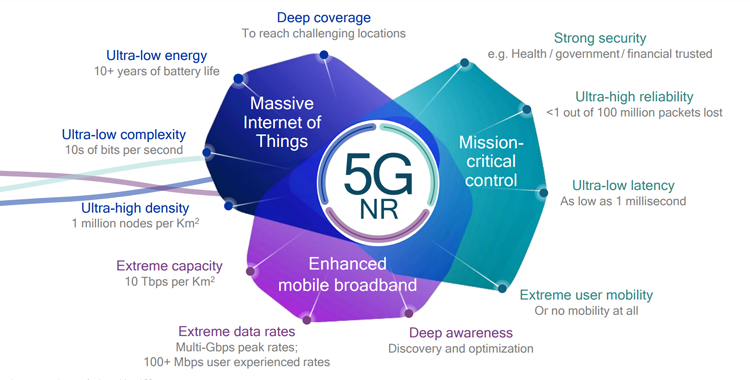
Figure 1. A graphical representation of 5G NR, highlighting key performance features. (Image: ResearchGate)
This article reviews the five primary types of 5G, highlighting technical specifications and use cases for NR, millimeter wave (mmWave), sub-6 GHz, Ultra-Reliable Low Latency Communications (URLLC), and Reduced Capability (RedCap). It also previews anticipated 5G-Advanced features, including more effective network slicing techniques and expanded multiple input multiple output (MIMO) configurations.
Exploring the foundational technologies of 5G NR
Operating across a wide range of frequency bands from 410 MHz to 71 GHz, 5G NR is the foundational technology for all 5G standards. Key features and capabilities include:
- Orthogonal frequency-division multiplexing (OFDM) enhances spectral efficiency by dividing a radio signal into multiple smaller sub-signals, minimizing interference, and improving high data volume management.
- Massive MIMO and beamforming use numerous small antenna elements to bolster network capacity and data throughput. Complementing Massive MIMO, beamforming precisely focuses and directs signals, further improving reception and mitigating interference.
- 256-QAM (Quadrature Amplitude Modulation) boosts throughput by increasing the number of bits transmitted per symbol within the same spectrum.
- Carrier aggregation combines multiple frequency blocks and enables the simultaneous use of non-contiguous spectral bands, effectively expanding bandwidth capabilities and supporting higher data rates.
- Subcarrier spacing optimizes frequency use based on dynamic network conditions, improving network performance and flexibility.
- Dual connectivity ensures expanded coverage and uninterrupted connectivity by allowing devices to connect concurrently to multiple 5G bands.
- Network slicing creates multiple virtual networks within a single physical 5G network, facilitating optimized connectivity solutions with customized performance, security, and latency parameters.
- Advanced positioning, timing, and synchronization provide key positioning and synchronization capabilities for advanced driver-assistance systems (ADAS), industrial automation, smart grid management, and location tracking.
5G NR supports a diverse set of eMBB use cases, devices, and verticals. Some of these, however, benefit significantly from customized 5G standards that address specific requirements and performance parameters.
5G mmWave: Delivering ultra-high speeds in dense cities
5G mmWave, for example, operates in high frequencies, typically ranging from 24 GHz to 40 GHz, delivering multi-gigabit speeds (Figure 2), massive bandwidth, and ultra-high data rates in dense urban areas. To overcome range limitations and ensure extensive coverage, mmWave relies on small cells as well as Massive MIMO, beamforming, and adaptive beam tracking.
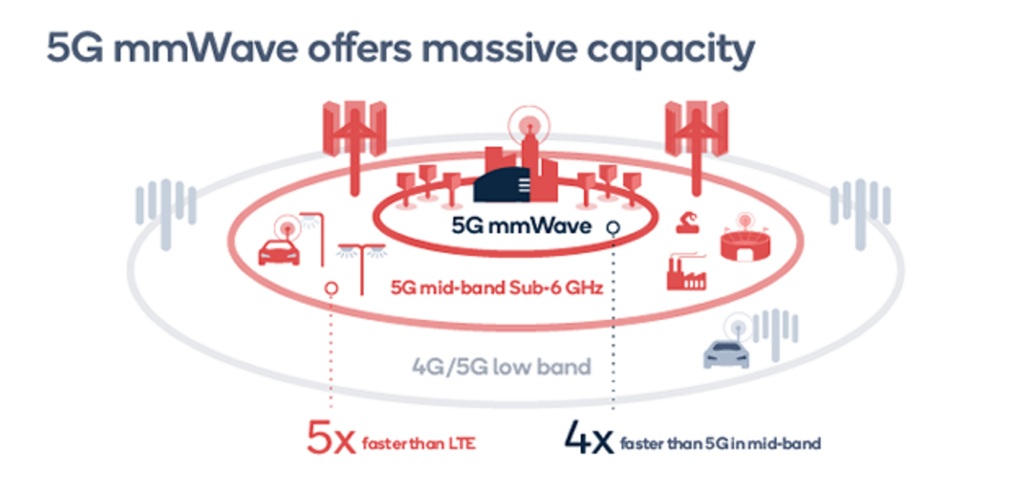
Figure 2. A detailed diagram showcasing mmWave speeds 4x faster than 5G in mid-band frequencies. (Image: Netgear)
Small cells boost mmWave coverage by reducing signal travel distances and filling coverage gaps, while beamforming and adaptive beam tracking dynamically adjust signal direction and strength to maintain stable connections. Additionally, OFDM manages high bandwidth requirements by efficiently handling multiple signal channels, while 256-QAM encodes more bits in each signal element to increase data rates. Lastly, subcarrier spacing and dual connectivity efficiently pair and seamlessly switch between mmWave and lower frequency bands.
5G mmWave is particularly effective for high-data-throughput applications such as 4K or 8K video streaming, virtual reality (VR), augmented reality (AR), and gaming. In cities, stadiums, and transportation hubs, it supports enterprise applications and smart city infrastructure, including Internet of Things (IoT) devices and real-time data analytics. 5G mmWave also plays a crucial role in facilitating fixed wireless access (FWA) in underserved or hard-to-wire areas.
Balancing coverage and capacity with 5G Sub-6 GHz
5G Sub-6 GHz signals operate in frequency bands below 6 GHz (Figure 3), striking a balance between the broad coverage of traditional cellular bands and the high capacity of mmWave frequencies. This spectrum range improves propagation, helping signals travel farther and penetrate buildings more effectively than mmWave frequencies. Although Sub-6 GHz offers lower peak speeds and bandwidth compared to mmWave, it compensates with broader coverage and range.
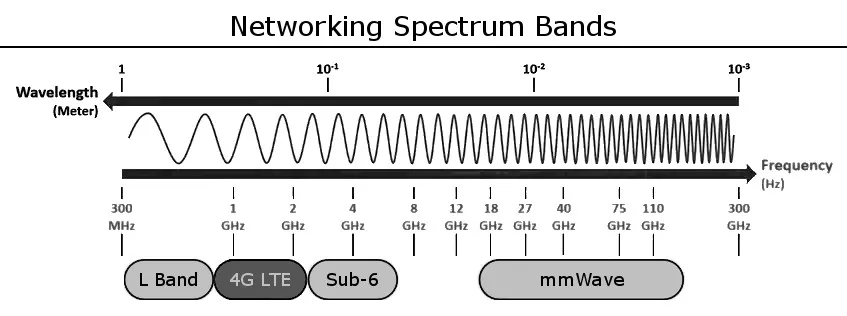
Figure 3. A 5G networking spectrum band diagram depicting the relationship between frequency and wavelength. 5G Sub-6 GHz offers an optimal blend of coverage and capacity. (Image: Android Authority)
Sub-6 GHz boosts signal strength and data rates with Massive MIMO and advanced beamforming, while carrier aggregation combines non-contiguous frequency bands to increase bandwidth and improve data throughput. Sub-6 GHz also uses OFDM to optimize spectral efficiency and streamline data transmission, employing 256-QAM to increase the transmission of bits per symbol.
Crucial for delivering widespread 5G coverage, Sub-6 GHz ensures robust connectivity across diverse environments and topography, from suburban and rural areas to dense urban settings. Offering a mix of extensive coverage and moderate to high data speeds, Sub-6 GHz facilitates a wide range of applications, such as IoT, rural broadband, smart city infrastructure, and agricultural technology. By supporting dual connectivity, Sub-6 GHz enables devices to simultaneously maintain connections with other frequencies, further bolstering reliability and data speeds.
5G RedCap: Bridging the gap between 5G NR and legacy standards
Standardized in 3rd Generation Partnership Project (3GPP) Release 17, 5G RedCap supports key 5G NR features such as network slicing, precise positioning, accurate timing, and synchronization. Effectively bridging the gap between 5G NR and legacy LTE-M and NB-IoT standards (Figure 4), 5G RedCap simplifies device designs, substantially reducing cost, antenna count, and power consumption.
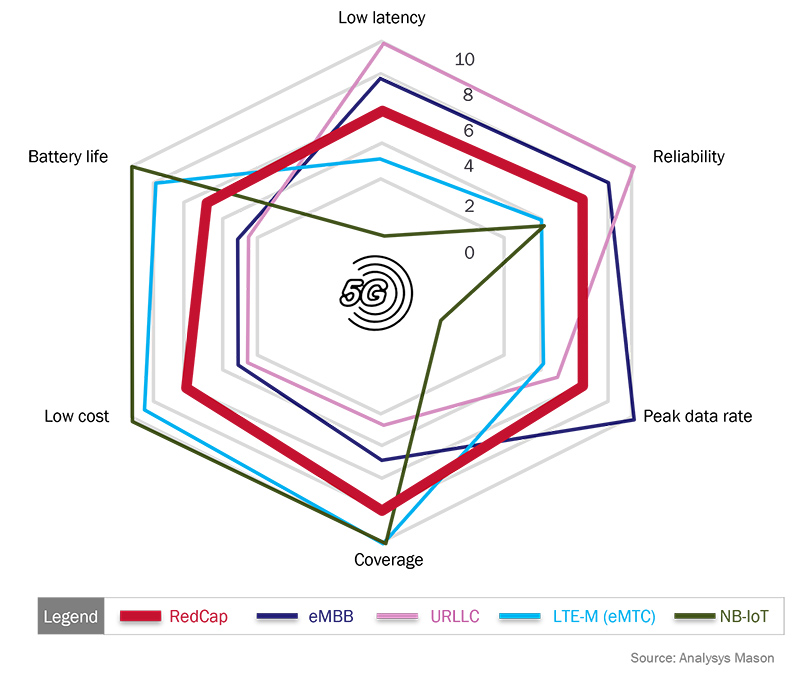
Figure 4. A radar chart comparing RedCap, eMBB, URLLC, LTE-M, and NB-IoT across various performance metrics such as latency, reliability, battery life, cost, and coverage. (Image: Analysis Mason)
5G RedCap targets wearables, smart home devices, and consumer electronics with moderate to high downlink rates ranging from 100 Mb/sec (uplink) to 220 Mb/sec (downlink). In enterprise deployments, 5G RedCap supports smart office devices, remote monitoring systems, and warehouse or logistics management applications. Additional use cases span AI-powered video surveillance, asset (location) tracking, and industrial IoT (IIoT).
Carriers can deploy 5G RedCap alongside other 5G technologies, such as mmWave and Sub-6 GHz, effectively leveraging network resources to meet specific service demands without major modifications. Notably, 5G RedCap provides a cost-effective alternative to 5G URLLC, with the latter primarily supporting devices and applications that demand the lowest possible latency.
Achieving sub-millisecond latency with 5G URLLC
5G URLLC (Figure 5) achieves sub-millisecond latency using sophisticated network technologies such as Time Division Duplexing (TDD), allowing efficient use of the same frequency band for both uplink and downlink at different times. Additional techniques, including preemptive scheduling and prioritized resource allocation, ensure seamless data transmission and a reliability rate of 99.999%. Performance is further bolstered by short Transmission Time Intervals (TTI), advanced modulation schemes, and robust error correction protocols.
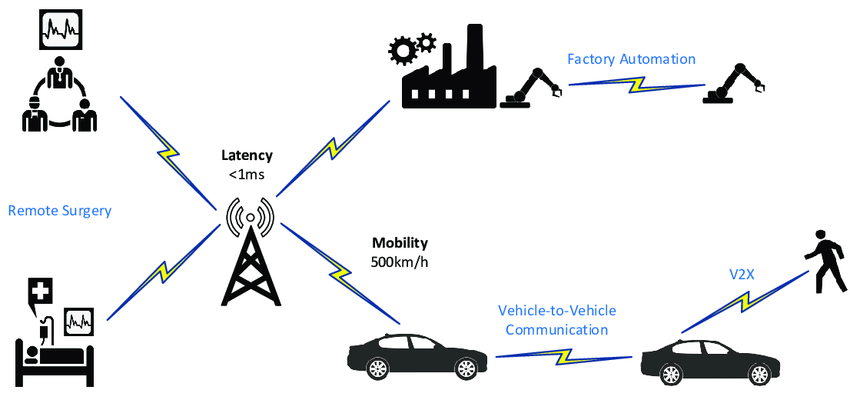
Figure 5. A detailed diagram illustrating 5G URLLC use cases. (Image: ResearchGate)
5G URLLC facilitates the rapid transfer of data between AI-driven edge sensors in various automotive systems, such as adaptive cruise control, lane departure warnings, emergency braking systems, and vehicle-to-vehicle communication. Similarly, 5G URLLC supports crucial healthcare applications, including remote surgeries, that rely on the real-time transmission of high-definition video, precise control signals, and advanced positioning capabilities. In industrial settings, URLLC synchronizes complex system functions, from energy grids and automated factories to smart agriculture systems.
5G-Advanced: evolving core NR technologies
Outlined in 3GPP Release 18, 5G-Advanced complements core NR technology with 10Gbps speeds, more effective network slicing techniques, and expanded Massive MIMO configurations for extremely large antenna arrays that deliver fixed wireless access (FWA) connectivity. 5G-Advanced also supports deterministic networks with time-sensitive features that guarantee almost zero packet loss rates and bounded latency.
Extending mid-band frequency between 7 GHz and 24 GHz, 5G-Advanced introduces new power-saving features for extended reality (XR) devices, facilitates signal timing with centimeter-level accuracy, and adds sophisticated artificial intelligence (AI) and machine learning (ML) capabilities to streamline network management and efficiency. 5G-Advanced targets many applications and devices, from edge computing and XR to vehicle-mounted relays and satellite connectivity.
Summary
5G NR serves as the foundational 5G standard, offering extensive eMBB capabilities across a broad spectrum for various devices and applications. 5G mmWave delivers ultra-high speeds in dense urban environments through high-frequency bands, while 5G Sub-6 GHz ensures comprehensive coverage at moderate speeds in suburban and rural areas. 5G RedCap facilitates simpler device designs and energy-efficient connectivity for IoT, enterprise, and consumer devices, while 5G URLLC offers ultra-reliable, low-latency communications for mission-critical applications. Lastly, 5G-Advanced will introduce faster speeds and sophisticated AI and ML capabilities alongside improved MIMO.
References
5G System Overview, 3GPP
How RedCap fits into 5G and IoT
What Is 5G NR? 5G New Radio Standard Explained, Celona
Sub-6 GHz and mmWave: It Depends on Location, 5G Technology World
Look Inside the 5G mmWave Signal Chain, 5G Technology World
URLLC: What it is and How it Works, Antenova
5G-Advanced: Shaping the Future of Operator Services, GSMA
How 5G RedCap Can Help Accelerate and Simplify 5G Private
Network Adoption, MosoLabs
What is 5G Advanced and When Will it Release?, Android Authority
The Next Wave of 5G – 3GPP Release 19, Ericsson

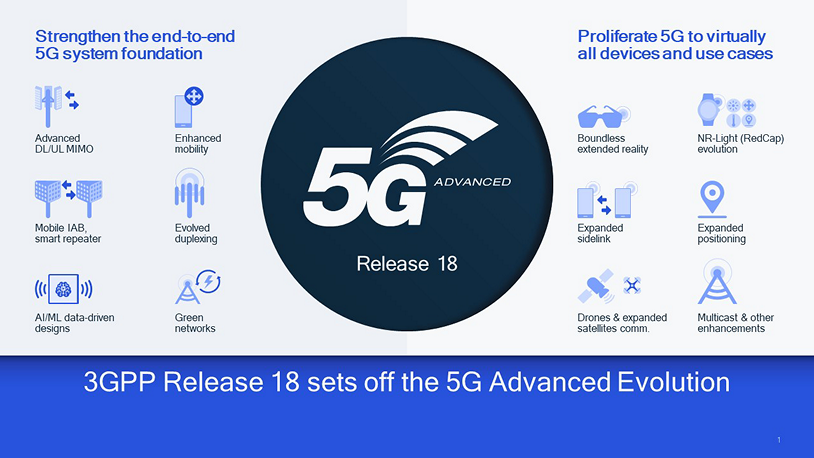
Leave a Reply